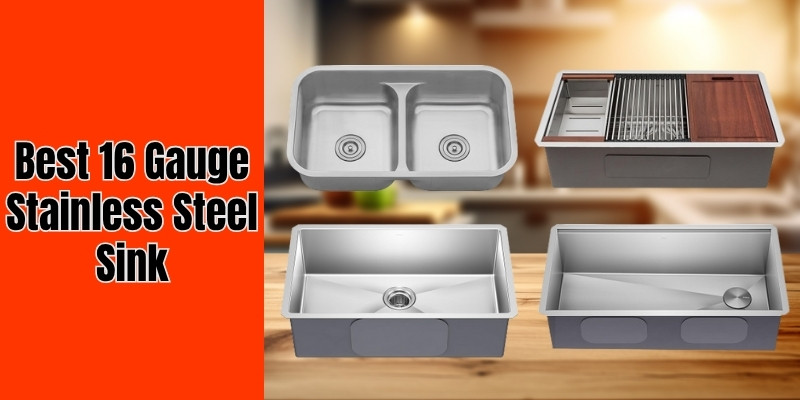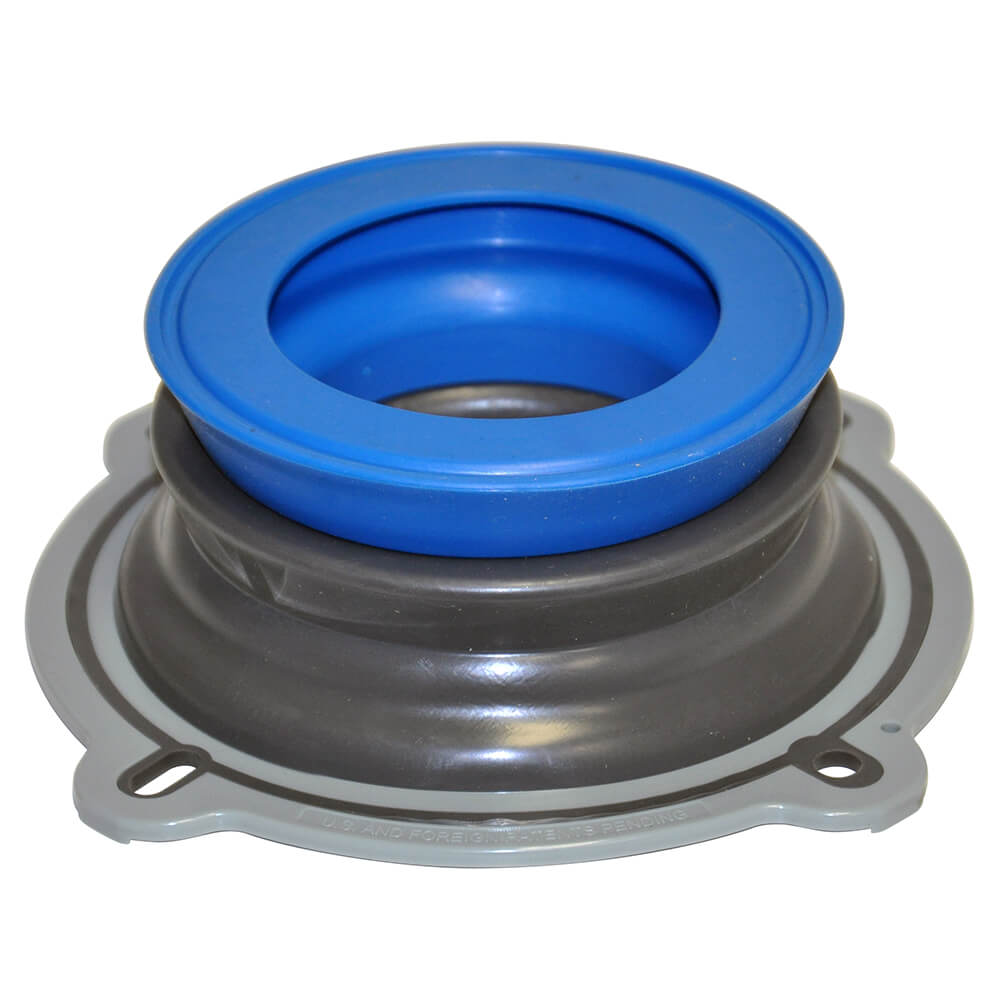Disclosure: This post contains affiliate links and I will be compensated if you make a purchase after clicking through my links. Learn More
Are you struggling to figure out what size grease trap you need for your kitchen or restaurant? You’re not alone.
Choosing the right size is crucial for keeping your plumbing system running smoothly and avoiding costly maintenance issues. A grease trap that’s too small can overflow, leading to unpleasant odors and expensive repairs. On the other hand, one that’s too large might be an unnecessary investment.
You’ll discover everything you need to make an informed decision. We’ll break down the factors you need to consider and provide simple steps to determine the perfect size for your needs. Stick around to ensure your kitchen runs efficiently and your peace of mind stays intact.

Importance Of A Grease Trap
Understanding the importance of a grease trap is crucial. These devices play a vital role in maintaining plumbing systems. They prevent fats, oils, and grease from entering wastewater systems. Without a grease trap, these substances can clog pipes. This leads to costly repairs and environmental issues. Properly sizing a grease trap ensures its efficiency and effectiveness.
Why Grease Traps Are Essential
Grease traps catch fatty substances before they reach the sewer. This is essential for preventing blockages. Blocked pipes can cause backups and damage. Restaurants and commercial kitchens especially benefit from grease traps. They handle large quantities of fats and oils daily. Without a grease trap, plumbing systems suffer.
Environmental Impact Of Grease Traps
Grease traps help protect the environment. They prevent pollutants from entering water systems. Oils and fats can harm aquatic life. Proper grease trap maintenance reduces this risk. It ensures that waste is disposed of responsibly.
Cost Benefits Of Using Grease Traps
Grease traps save money in the long run. They reduce the need for plumbing repairs. Regular maintenance avoids expensive blockages. Businesses can save on operational costs. Efficient grease management leads to smoother operations.
Health And Safety Considerations
Maintaining a grease trap ensures health safety. Accumulated grease can create foul odors. It attracts pests and bacteria. Proper cleaning prevents these health risks. A clean kitchen environment is vital for staff and customers.
Factors Influencing Grease Trap Size
Determining the correct grease trap size involves assessing kitchen output, water usage, and waste composition. Consider the number of meals served and types of food prepared. Proper sizing ensures efficient waste management and prevents plumbing issues.
Understanding the right size for your grease trap is crucial for maintaining an efficient kitchen. If you’ve ever faced the nightmare of clogged pipes, you know that a misjudged grease trap can turn your culinary haven into a plumber’s playground. Several factors influence the size you need, and getting it right will save you headaches and costs.
Kitchen Size And Capacity
Your kitchen’s size and capacity are fundamental. A bustling restaurant with multiple fryers and grills will generate more grease than a small café. Consider the number of sinks, dishwashers, and other equipment that contribute to waste.
Think about your busiest day. Is your kitchen packed with orders? The more your kitchen can handle, the larger your grease trap needs to be. A mismatch can lead to frequent cleanouts, disrupting your workflow.
Types Of Food Prepared
The type of food you prepare significantly affects the amount of grease produced. A seafood restaurant will have different needs than a bakery. Foods high in fats, oils, and grease (FOG) contribute more to waste. Evaluate your menu.
Are you frying chicken or sautéing vegetables? Even a slight difference in preparation style can impact grease production. Adapting your grease trap size to your menu is a proactive step.
Flow Rate And Frequency
Flow rate refers to how quickly wastewater moves through your plumbing. Fast-flowing kitchens need grease traps that can handle rapid intake. If your restaurant has peak hours, consider how often your sinks and appliances are used. Measure your busiest hours.
Do the dishes pile up, or is there a constant flow? A high frequency of use demands a trap that can keep up without overflowing. Ensuring your trap matches your flow rate avoids backlogs and inefficiencies.
Choosing the right grease trap size isn’t just a technical decision—it’s about understanding your kitchen’s unique needs. Are you prepared to make the right choice? An informed decision today can prevent tomorrow’s problems.
Calculating The Right Size
Determining the correct size for a grease trap is essential. It ensures efficiency in your kitchen. The right size helps in managing waste effectively. It also prevents plumbing issues. Begin by understanding key factors. These include flow rate, grease production, and regulations. Let’s dive into each aspect.
Measuring Flow Rate
Flow rate is the volume of water passing through. It’s measured in gallons per minute (GPM). To calculate, consider all water sources. Sinks, dishwashers, and other fixtures matter. Add their flow rates together. This gives the total GPM. A higher GPM requires a larger grease trap. Ensure you get accurate measurements.
Estimating Grease Production
Estimate the amount of grease your kitchen produces. This varies with the type of food served. Fast food restaurants might produce more grease. Fine dining establishments may produce less. Use past data or industry averages. This helps in making a good estimate. More grease production means a larger grease trap is needed.
Local Regulations And Codes
Local regulations play a crucial role. They dictate specific requirements for grease traps. Check with your local health department. They provide guidelines on grease trap sizes. Compliance is necessary to avoid penalties. Regulations ensure environmental safety. Always adhere to these codes for smooth operations.
Grease Trap Sizing Calculator
Professional sizing calculations for commercial kitchen grease interceptors
Calculation Results
Important Notes:
- Calculations based on Uniform Plumbing Code (UPC) standards
- Minimum 20 GPM capacity recommended for commercial kitchens
- Consider local code requirements and health department regulations
- Professional consultation recommended for complex installations
- Regular maintenance required every 30-90 days depending on usage
Types Of Grease Traps
Choosing the right grease trap size involves understanding different types. Grease traps help manage waste by capturing fats, oils, and grease. Each type offers unique benefits for various needs. Knowing these can guide you to the best choice.
Passive Hydromechanical Traps
Passive hydromechanical traps use simple design for effective grease management. They work by slowing water flow, allowing grease to separate naturally. Ideal for small kitchens or low-flow areas. Easy to install and maintain.
Automatic Grease Removal Units
Automatic grease removal units (AGRUs) offer advanced features. They use sensors to detect grease levels. Then, they automatically remove grease to a separate container. This helps in high-volume kitchens. Reduces manual cleaning effort.
Gravity Grease Interceptors
Gravity grease interceptors are larger and suitable for bigger establishments. They use gravity to separate grease from water. Ideal for restaurants with high grease output. Requires more space but provides efficient grease management.
Installation Considerations
Choosing the right grease trap size is just one step. The installation process involves several key considerations. These factors ensure the grease trap functions properly. Let’s explore these essential points for a smooth installation.
Space Requirements
Space is crucial for installing a grease trap. Measure your available area carefully. The grease trap should fit comfortably. Allow room for easy access and movement. Consider future maintenance needs as well.
Access For Maintenance
Regular maintenance keeps grease traps efficient. Ensure easy access for cleaning and inspections. Plan for a location that’s not obstructed. Clear pathways make maintenance tasks simpler.
Plumbing Connections
Proper plumbing is essential for a grease trap. Ensure correct connections to sinks and drains. Avoid complex plumbing setups. Simple designs reduce potential issues. Consult a plumber if needed.
Maintenance And Cleaning
Proper maintenance and cleaning of grease traps are crucial. It ensures smooth operation and prevents costly repairs. Regular cleaning helps avoid unpleasant odors and blockages. Understanding the right cleaning practices is essential. It keeps your grease trap functioning efficiently. Let’s explore how often to clean, who can help, and how you can do it yourself.
Frequency Of Cleaning
Grease traps need cleaning regularly. The frequency depends on usage. Restaurants with high traffic may require weekly cleaning. Smaller establishments might need cleaning monthly. Monitoring grease levels helps determine the right schedule. Avoiding overflow is key to maintaining hygiene and efficiency.
Hiring Professional Services
Professionals offer thorough cleaning services. They use specialized equipment. This ensures all residue is removed. Hiring experts saves time and guarantees proper maintenance. They follow regulations to prevent environmental hazards. Consider professional services for peace of mind and efficiency.
Diy Cleaning Steps
DIY cleaning can be economical. Start by removing the trap lid carefully. Use a scraper to remove solid waste. Dispose of waste in sealed containers. Clean the trap with warm water and soap. Rinse thoroughly to remove all residue. Ensure proper disposal of waste to prevent blockages.
Cost Implications
Choosing the right grease trap size impacts your budget. It’s crucial to understand the cost implications to make an informed decision. This section explores the financial aspects of grease traps.
Initial Purchase Costs
Buying a grease trap requires careful budget planning. The size of the trap affects its price. Larger traps are more expensive. Small businesses might opt for smaller traps to save money upfront. Consider the installation costs as well. Professional installation ensures proper functionality. It might add to your initial expenses.
Operational Expenses
Operational costs vary based on the trap size. Larger traps require more maintenance. They might need frequent cleaning and checks. This increases maintenance costs. Smaller traps might clog more often. Regular maintenance is necessary to prevent issues. Maintenance contracts can help manage these expenses.
Long-term Savings
Investing in the right size trap can save money in the long run. A properly sized trap minimizes plumbing issues. Fewer issues reduce repair costs. Efficient traps extend the lifespan of your plumbing system. This results in lower replacement costs over time. Long-term savings outweigh initial expenses when choosing the right size.
Frequently Asked Questions
What Factors Determine Grease Trap Size?
Grease trap size depends on kitchen size, water flow, and grease output. Larger kitchens need bigger traps. Calculate carefully.
How Do I Calculate Grease Trap Capacity?
Estimate water flow rate and grease production. Use a calculator or consult a professional. Accurate calculation prevents issues.
Can I Install A Small Grease Trap In A Large Kitchen?
A small trap may overflow and clog pipes. Large kitchens need bigger traps for effective grease management.
Are There Regulations For Grease Trap Sizes?
Yes, local regulations often dictate grease trap sizes. Check local codes to ensure compliance and avoid fines.
Final Words
Choosing the right grease trap size matters. It impacts efficiency and compliance. Small traps suit less waste. Larger venues need bigger traps. Consider your kitchen’s waste volume. Check local regulations for guidance. Correct sizing prevents clogs. It saves time on maintenance.
Properly sized traps reduce odors. They ensure smoother kitchen operations. Consult professionals for accurate sizing. Make informed decisions for best results. Efficient grease management helps your business. Keep your kitchen running smoothly. Avoid disruptions with the right trap size. Protect your plumbing.
Serve your customers better.


